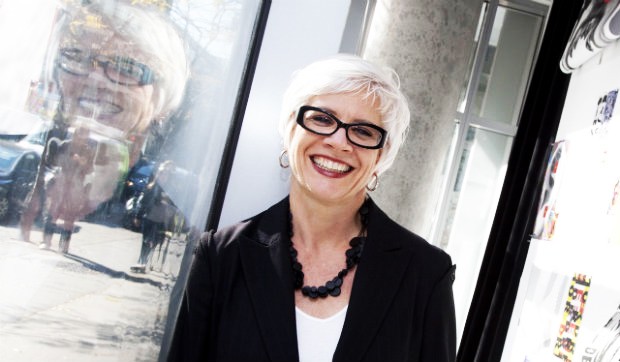‘Research creation acknowledges that artists actually have a research practice’
 Anne Whitelaw: “Research creation is a term that helps create a language around which you can apply for funding for artists working within the university.”
Anne Whitelaw: “Research creation is a term that helps create a language around which you can apply for funding for artists working within the university.”
Concordia’s Faculty of Fine Arts has appointed Anne Whitelaw associate dean of Research. Her three-year term began in August, at the end of a sabbatical in which she completed her new book, Spaces and Places for Art: Making Art Institutions in Western Canada 1910-1990.
“I think that Concordia has one of the best fine arts faculties in Canada, if not outside Canada, and that needs to be recognized and promoted,” says Whitelaw, who is also the president of the Universities Art Association of Canada.
“Our team works very closely together, and I’m thrilled to have Anne bring her skills and experience to our office and to the Office of Research,” says Catherine Wild, dean of the Faculty of Fine Arts. “We have nine departments, 59 programs and 120 faculty members, so we really need a proactive person like Anne in this position.”
Wild sees Whitelaw’s role as critical in advocating and articulating the top interests of Fine Arts to the larger university, as well as keeping faculty members informed about opportunities, institutional priorities and how their work might align with those priorities.
“Historically, our faculty’s research creation has areas of critical mass in cinema, art history and visual art,” she says. “In those main areas of strength, we have a very high percentage of award-winning faculty and alumni, but we also have exciting new areas of research in things like interactive fabric. The goal and vision for the faculty is to create an environment in which very diverse kinds of research can thrive — especially with projects like TAG and Hexagram, where the shift is toward more teamwork and groups of graduate students.”
Whitelaw’s position also involves keeping Wild informed on current faculty research projects, while having full oversight on all research-related activities on behalf of Fine Arts. To that end, she will support the faculty’s researchers in their individual and collective efforts to secure funding and launch successful research programs.
Like Wild, she sees her role as one of advocacy. “Not long ago, Fine Arts faculty members couldn’t apply to funding organizations, and they couldn’t apply to the Canada Council.” Prior to joining Concordia’s Department of Art History in 2011, Whitelaw was an associate professor in the Department of Art and Design at the University of Alberta.
She views the term “research creation” — as opposed to simply “research,” which is used in other faculties — as a strategic term that highlights the existence of artists’ practices.
As Whitelaw explains, “Research creation is a term that helps create a language around which you can apply for funding for artists working within the university. More importantly, it acknowledges that artists actually have a research practice — often a conceptual process whose aim is not necessarily to produce a final object to be sold, or a book, or an article.
These artists are exploring a larger series of questions, in the same way that humanities researchers and social science researchers are wrestling with problems.”
Whitelaw believes that the term research creation helps debunk the Renaissance idea of the artist genius being touched by God and given a finished product.
“Thought and work go into the making of art,” she says. “Visual art practice has expanded into more ephemeral realms like performance art, for example, where there isn’t an object to exhibit. The term ‘research creation,’ then, gives us a way to approach the Social Sciences and Humanities Research Council (SSHRC) and the Fonds de research du Québec to push these practices forward.”
Whitelaw’s personal research examines the intersections of art historiography and cultural institutions in Canada. She has an MA in the history and theory of art from the University of Essex and a PhD in communication studies from Concordia.
She was a research fellow at the National Gallery of Canada before undertaking SSHRC-funded postdoctoral research in visual culture at the University of Rochester.
Find out more about Concordia’s Faculty of Fine Arts.

